Best budget soundbars 2025: affordable home cinema sound tested by experts
Get yourself a great deal and boost your audio with these affordable TV soundbars

Most TVs sound terrible. In fact, even most of the best-sounding TVs sound pretty poor compared to a half-decent audio system. That's why we always recommend that you budget extra for audio whenever you buy a new TV.
Don't worry, though, because that extra budget doesn't need to be huge – just £100 / $100 can buy you a soundbar that sounds much better than the average TV. If you can stretch to £500 / $500, you can pick up a soundbar that will deliver a hearty dose of home cinema. It's soundbars in that price bracket that we're looking at today.
Our team of experts has been testing soundbars since the category emerged in the early 2000s, and we've put every major model through its paces. We test soundbars in our dedicated facilities, comparing each new model side-by-side with the best in its class. You can click here to read more about how we test soundbars, but suffice it to say we don't just know which soundbars are good and bad – we know how each one stacks up against its competition.
Below, you will find only the very best budget soundbars, handpicked by our team of reviewers. If you have a bigger budget available, also check out our lists of the best soundbars overall and the best Dolby Atmos soundbars.
The quick list
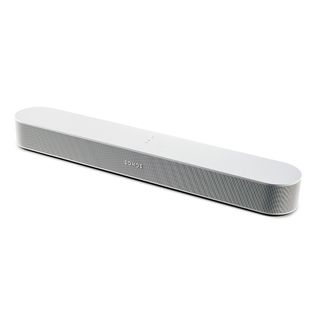
Best budget soundbar overall
Great sound, Dolby Atmos support, and a ton of features make this the ideal upgrade from your TV speakers.
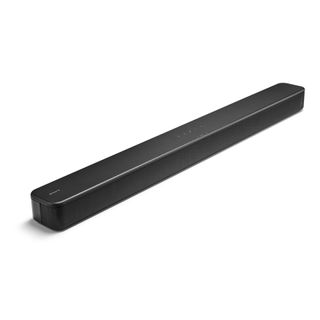
Best soundbar under £100
This supremely affordable bar is ideal for anyone looking for an easy enhancement to their TV’s built-in speakers.
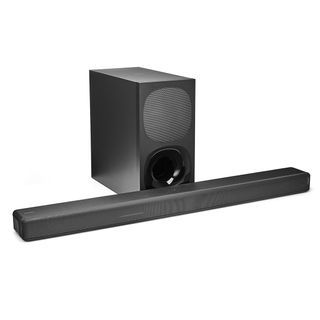
Best budget soundbar for bass
The Sony HT-G700 is an affordable Atmos soundbar that comes with a separate sub, offering a big, weighty sound and excellent value for money.
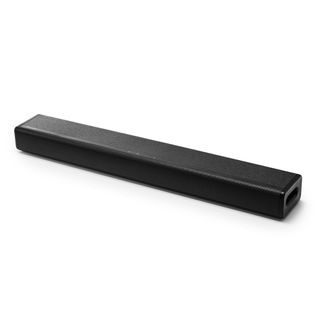
Best super-cheap soundbar
An entry-level TV speaker that’s an excellent solution for those with limited cash and space.
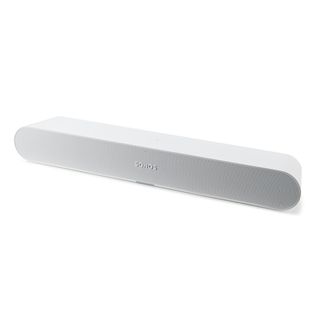
Best budget soundbar for dialogue
A petite but punchy Sonos soundbar that delivers room-filling sound and sparkling vocal clarity at a reasonable price.
Recent updates
31st January 2025
Removed the Roku Streambar as it's no longer available and updated the FAQ section

I’m What Hi-Fi?’s TV and AV Editor, and I’ve been testing TVs and home cinema products (as well as hi-fi kit and headphones) for over 17 years. As TVs have become slimmer, their audio has worsened, as there’s less room inside for decent speakers. It always amazes me every time I test a new TV just how poor the audio is, especially compared to the stunning picture quality. Thankfully there are plenty of budget soundbars around that will improve the audio of almost any TV, proving you don’t need to spend big to hear great results.
The best budget soundbars we recommend in 2025
Why you can trust What Hi-Fi?
Best budget soundbar overall





Specifications
Reasons to buy
Reasons to avoid
Delivering Dolby Atmos from a small chassis is no mean feat and the Sonos Beam Gen 2 achieves a convincing, immersive performance without so much as a vertical speaker in sight. Instead, when watching Atmos content, two of the soundbar's five front-facing arrays are dedicated to reproducing overhead and surround sounds. With its hefty processing power, the Sonos Beam Gen 2 uses psychoacoustic HRTF (head-related transfer function) technology to give the impression of height without needing to get vertical.
While genuine overhead sounds are perhaps a stretch too far for this petite TV soundbar, its virtual delivery of the Atmos format outstrips any similarly priced soundbar and even a few that are more expensive. The Beam Gen 2 offers an enveloping, spatial soundscape with rich, detailed audio. "When listening to Atmos films with the Beam Gen 2 there's tangible motion, depth and space, which heightens the drama and sense of immersion," we wrote in our review.
Not that many soundbars at this price point come with networking capabilities, but this being a Sonos product, the Beam Gen 2’s ability to integrate into a wireless multiroom system is fundamental to its design. This means you can stream to the Beam Gen 2 from a handheld device using Apple AirPlay 2, and Spotify Connect is built-in too. An upgrade also added support for Amazon Music Ultra HD audio, giving access to lossless 24-bit/48kHz tracks as well as Dolby Atmos Music.
Despite the lack of upward drivers, if space and budget are limited there isn't a better Dolby Atmos soundbar that we'd recommend.
Read the full Sonos Beam Gen 2 review

One of the things I love most about the Beam Gen 2 is how it can be just the start of a home cinema system, if you want it to be. It sounds great in its own right (that's how I use it at home) so you can buy it solo to begin with, but if you fancy an upgrade at a later date, you can add surrounds and/or a subwoofer.
Best soundbar under £100








Specifications
Reasons to buy
Reasons to avoid
If you're looking for a simple, constructive step up in sound from your TV's in-built speakers, Sony's SF150 offers a significant sonic enhancement for little outlay.
Despite its low price, the SF150 is a well-built speaker that doesn't look out of place perched beneath a TV that costs several times its price. Alongside HDMI ARC, it has an optical input supporting Dolby Digital, Dolby Dual mono and LPCM 2ch. There's a USB port and Bluetooth 4.2 connectivity for music playback from an external source, too.
The SF150 also features Sony's S-Force Front Surround technology, which applies processing to give the acoustic impression of a more encompassing sound stage. While it's certainly no replacement for proper surround sound, it does add a more dramatic sense of weight and separation.
As we wrote in our review: "Streaming the opening scene of Unbroken from Netflix with the soundbar in Cinema mode, there's a tangible breadth to the soundstage as the planes fly past and dramatic contrast as we switch between locations within the aircraft."
Sonically the SF150 paints with fairly broad brushstrokes, meaning dialogue can sometimes feel a touch muffled, and transients lack impact, but that should come as little surprise at this almost ridiculously low price. Anyone wanting a musical, finely detailed speaker should aim for a more sophisticated model, but for those looking for a quick and easy improvement to their TV, this budget bar is ideal.
Read the full Sony HT-SF150 review
Best budget soundbar for bass





Specifications
Reasons to buy
Reasons to avoid
Sony's HT-G700 might not be the most compact bar around, but it's big on sound, big on value and comes with a wireless subwoofer, dedicated HDMI input and support for both Dolby Atmos and DTS:X.
Sony’s own Vertical Surround Engine and S-Force Pro Front Surround technologies dish up a convincing Dolby Atmos soundscape while that chunky subwoofer (39cm-tall) adds plenty of heft to big explosions. "It’s clear that the subwoofer allows the system to reach bassy depths that its sub-less rivals cannot, lending an enjoyable heft to the whole experience. The way the sound fills the room is impressive, too, and the HT-G700 does a surprisingly effective job of simulating a Dolby Atmos soundscape," we wrote in our review.
Of course, being an entry-level Dolby Atmos soundbar, it doesn't compare to the much pricier Sony HT-ST5000 in terms of clarity. It also lacks music streaming features and voice control.
Still, if you're after a dedicated bit of home cinema kit on a budget, the powerful-sounding HT-G700 serves up a seriously cinematic performance at a nice price.
Read the full Sony HT-G700 review
Best super-cheap soundbar









Specifications
Reasons to buy
Reasons to avoid
The Hisense HS214 is a simple way to boost your TV’s sound, adding more forthright dialogue and an extended tonal reach. You won’t get the dynamic performance and detail of more premium models, but you could easily spend more and end up with less at this end of the soundbar spectrum.
Sonically, the inclusion of the woofer is a nice touch, and while you shouldn’t expect cinematic low-end, the enhanced depth that the bass unit brings to the table isn’t superfluous either, giving this tiny soundbar more solidity and musicality than you would expect. "Watching Leonardo DiCaprio grapple with a bear in The Revenant on Blu-ray, that extra bit of heft means each blow and snarl has more impact and danger attached," we wrote in our review.
Despite its price, the HS214, with its low profile and quality build, would sit happily beneath both a new high-spec TV or an older model. Its small footprint makes it particularly well suited to smaller rooms and screens, and if you’re more into wall mounting, there are rigging points at the rear with fixings included in the box – though it’s worth bearing in mind that this will affect the bass performance of the downward-firing woofer.
All the TV connection options you’d expect are present, with HDMI ARC, optical and coaxial sockets capable of handling Dolby Digital, Dolby Digital Plus and PCM audio. Meanwhile, for playback from an external device, there’s a USB port (supporting MP3/WAV/WMA/FLAC file types), 3.5mm mini-jack aux and Bluetooth 4.2 for wireless streaming. And all for a very reasonable price indeed.
Read the full Hisense HS214 review
Best budget soundbar for dialogue





Specifications
Reasons to buy
Reasons to avoid
It may not be the warmest or most cinematic-sounding soundbar, but the Sonos Ray is very capable and, most importantly, is an accessible way to boost your TV audio, competently addressing the biggest concern most users have: dialogue intelligibility.
Testing it with Blade Runner 2049, we wrote: "As K makes his way to his baseline test in chapter 2, the clangorous soundscape and snatches of dialogue are clear and forthright, altogether avoiding the boxiness often heard with other budget soundbars. Although there isn’t quite as much authenticity and warmth in voices as the [Sonos] Beam Gen 2 can offer, speech is pleasantly crisp without veering into harshness."
This is a speaker with practicality and affordability in mind, delivering clear, punchy sound without the frills. Its ultra-compact dimensions, tapered build and forward-facing speakers mean it takes up little space and removes any need for a clear line of sight for upward- and side-firing drivers, making it a practical choice for small rooms and even desktops.
The Ray has been conceived to slot into cabinets without its sonic dispersion being impacted. However, it doesn’t feature the virtual Dolby Atmos decoding of Sonos’ more premium soundbars – the Beam Gen 2 and Arc. So, pragmatically, Sonos also decided to ditch the HDMI eARC connections of its pricier products in favour of a classic optical input. Almost every TV has an optical output, but most monitors and consoles do not.
In our initial review of the Ray, we felt that its bass handling, which resulted in an unusual low-frequency resonant buzz across various movies and music, hampered its overall performance. However, since an update in July 2022, that problem has now been widely alleviated, and as such, we have upped our initial verdict from three stars to four.
Read the full Sonos Ray review
Also consider
The best budget soundbar alternatives we've tested:
Sony HT-S2000: A bit pricier than some models in the main list, but this Sony offers incredible value for money. It provides great dialogue and solid dynamics, plus a simple plug-and-play functionality that will appeal to many.
JBL Bar 300: With a stylish build and impressive feature set – not to mention a crisp, bassy sound – this JBL 'bar gives plenty of bang for buck.
Majority Sierra Plus: This lesser-known brand has produced a solid, entertaining performance for a very reasonable price.
How to choose the best soundbar for you
Soundbars add more powerful, direct and better-quality audio to your TV but, unlike dedicated speaker packages, your lounge won't have to accommodate six chunky boxes. Instead, a soundbar sits demurely beneath your TV, quietly getting on with levelling up its sound.
So what should you look for when buying one? Bluetooth is a fairly ubiquitous extra feature that allows the soundbar to wirelessly play music from an external device. While network connectivity is less common at the affordable end of the market, it is possible to find models that support other wireless technologies such as Apple AirPlay 2, and a few work with smart assistants like Amazon Alexa and Google Assistant, too.
As most of the models listed don't have app support, you should also look for a decent remote control, ample connections appropriate for your set-up and of course that all-important sound quality. But rest assured, all of the soundbars above sound good – you can read the full, in-depth review attached with each if you need further information and if a model's not on this list, it's because we wouldn't recommend it.
The best part is that some of the best soundbars on the market don't cost a fortune, as our list illustrates, meaning you can easily make an impactful change to your TV and film watching. And, you can always visit our dedicated guide on how to choose and set up a soundbar for some extra tips and advice.
How we test soundbars
We have state-of-the-art testing facilities in London, Reading and Bath, where our team of experienced, in-house reviewers test the majority of hi-fi and AV kit that passes through our door.
Each soundbar we test is paired with an appropriate reference TV and is directly compared to the best in its price and features class – whether that's the current What Hi-Fi? Award winner or a few of the latest models we've been impressed by in recent reviews. What Hi-Fi? is all about comparative testing, and we keep class-leading products in our stockrooms so we can easily compare new products to ones we know and love.
We are always impartial and do our best to make sure we're hearing every product at its very best, so we'll try plenty of different styles of films and TV shows that show what each soundbar is capable of with both advanced and standard audio formats. We'll check all the features onboard including music playback with a variety of genres and allow for plenty of listening time as well as running them in before we begin reviewing.
All review verdicts are agreed upon by the team rather than an individual reviewer to eliminate any personal preference and to make sure we're being as thorough as possible, too. There's no input from PR companies or our sales team when it comes to the verdict – we've been delivering honest, unbiased reviews for nearly 50 years now, and counting.
MORE:
See all our soundbar reviews
These are the best home theatre speaker systems
And the best Sonos Beam deals
F.A.Q.
What is a soundbar?
Are soundbars better than TV speakers?
Soundbars are slim, often rectangular, speaker systems with drivers positioned side by side that are designed to slot underneath your TV or to be fitted to the wall. With front-facing drivers, even basic, budget soundbars typically offer more direct and clear audio than a TV.
This is because as TVs have become slimmer, their in-built speakers have shrunk and are often positioned at the rear or underneath the screen – hardly the ideal position as large speakers that face forward will always be clearer and louder than tiny speakers pointing in another direction.
Manufacturers have tried, with varying success, to enhance the audio coming from their televisions. But, if you want to improve TV audio, you need a separate speaker designed for that purpose.
There are a few options to improve your TV sound that range from the budget to the expensive, but a soundbar is one of the simplest ways as they are typically compact and require minimal cabling. They often also have added benefits, such as wireless streaming over Bluetooth or wi-fi.
What is the best cheap soundbar?
That really depends on your definition of 'cheap'. If you mean 'under £500 / $500', it's the Sonos Beam Gen 2, but if you means 'under £100 / $100', we recommend the Sony HT-SF150.
How do I connect a soundbar to my TV?
Can you add a soundbar to any TV?
Almost every soundbar and TV, no matter its age, will have an optical connection. Some older models may have a stereo RCA connection as well.
ARC (and the more advanced eARC) is now the most common way to connect a soundbar to a TV. It works over HDMI. You simply find the HDMI socket on your TV that's labelled 'ARC' or 'eARC', and connect the soundbar to that. Not only is ARC/eARC much more convenient than optical, it's also capable of handling higher-quality formats such as Dolby Atmos.
Is ARC or Optical better for a soundbar?
The key thing to know about optical is that it's restricted in bandwidth compared to ARC/eARC. So if you have the choice between the two and opt for optical, you might not be making the most of the audio decoding built into your soundbar. The most advanced immersive formats optical can handle are compressed Dolby Digital or DTS 5.1 surround sound, so that means no Dolby Atmos or DTS:X.
When it comes to ARC/eARC, you need to ensure that your TV has a compatible HDMI socket that supports all the audio formats being sent to your TV. Read our guide to HDMI ARC and HDMI eARC for the full lowdown on this connection, but you need to know that ARC supports Dolby Atmos in its lossy Dolby Digital Plus format (the codec used by streaming services), while eARC can handle high-quality codecs such as Dolby Atmos in Dolby TrueHD. If your viewing involves physical media, you will probably want to ensure you have got an eARC connection to get the most from your system.
ARC/eARC also allows your main TV remote to control the basic volume and power functions of your soundbar via HDMI CEC (Consumer Electronics Control). Some soundbars come with their own remotes and/or have app control, but if your connection to your TV uses an optical cable, you may still be able to use your regular controller. Certain models, such as the Sonos Ray, can 'learn' to recognise the commands of both IR and RF remotes, but the set-up will depend on your TV manufacturer.
Unfortunately, ARC/eARC can sometimes introduce a slight audio lag resulting in lip-syncing issues that can vary depending on your TV-soundbar combo. However, many brands include controls to adjust the delay on a soundbar's app, and sometimes there's also an option to modify it on a TV's settings.
If you are using ARC/eARC to connect to a Dolby Atmos soundbar, check whether you are actually receiving Atmos. Most soundbar apps will give you confirmation of the type of audio format that you are currently listening to on the Now Playing page or occasionally on the soundbar's display (if it has one). So if what you are playing should be in Dolby Atmos, but the app says otherwise (likely 'PCM', '5.1' or '2.0'), then it's time to delve into the settings of your TV and Blu-ray player.
To receive Dolby Atmos, any source device must be set to output bitstream audio. You can find this option in the audio settings of TVs, Blu-ray players and streaming sticks. In PCM, you will hear the audio only in stereo, but sending bitstream means your soundbar will be able to receive those lovely Dolby formats, including Atmos.
What are the best equaliser setting for a soundbar?
If your soundbar comes with its own automatic calibration software, then make sure you run it, so the soundbar’s audio output is matched to your room’s layout and characteristics. The Sonos Beam (Gen 2), for example, uses Sonos's Trueplay software in conjunction with your smartphone's microphone to tailor its sound.
While automated optimisation is great, your own ears are even better. If your soundbar also has options to alter individual channel levels, don't be timid with tweaking things to suit your taste/needs. Every room is different, and hearing is subjective, so what sounds great to one person may not to another. The great thing about a soundbar is that it is generally straightforward to make adjustments and swap back if you change your mind.
Some soundbars will come with pre-programmed modes for different types of content. In our experience, soundbars with cinematic modes often use 'spatial' processing that can introduce high-frequency artefacts. In contrast, 'music' modes will usually have a bass and treble-heavy EQ that can sound a little brash. We tend to favour a flat standard mode, if one is available, that we manually adjust to our liking. But there is no one-size-fits-all approach that will work for every room and listener.
There is little more frustrating than not being able to hear dialogue when watching a TV show or movie, but inevitably, varying levels of speech clarity combined with how busy the soundscape is and the overall style of the mix can mean that whispery, mumbly vocals hinder even a top-quality, room-tuned soundbar.
Fortunately, most soundbars have speech enhancement feature settings that will typically raise the volume of the centre channel to improve dialogue audibility. Not every brand implements this with sophistication, and sometimes these modes can sound thin and harsh, but once again, it's always worth experimenting to find what works for you and your space.
Recent updates
- 31st January 2025
Removed the Roku Streambar as it's no longer available and updated the FAQ section - 6th August 2024
Added success criteria to the intro. Fixed hyperlinks. Edited image alt-texts. Added review quotes for each product. Added a 'Top Tip' for the Sonos Beam Gen 2. - 30th May 2024
Rewrote intro. Added 'Also consider' and 'Recent updates' sections, galleries for each product and an author block. Made spec boxes consistent. Added 'Back to top' jump links. - 14th February 2024
Added 'How we test' and 'How to choose' sections. - 14th December 2023
Added new main image. Rewrote intro.
Today's best budget soundbar deals
Get the What Hi-Fi? Newsletter
The latest hi-fi, home cinema and tech news, reviews, buying advice and deals, direct to your inbox.
Tom Parsons has been writing about TV, AV and hi-fi products (not to mention plenty of other 'gadgets' and even cars) for over 15 years. He began his career as What Hi-Fi?'s Staff Writer and is now the TV and AV Editor. In between, he worked as Reviews Editor and then Deputy Editor at Stuff, and over the years has had his work featured in publications such as T3, The Telegraph and Louder. He's also appeared on BBC News, BBC World Service, BBC Radio 4 and Sky Swipe. In his spare time Tom is a runner and gamer.